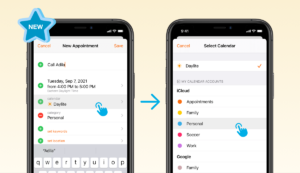If you’re the type of person that loves the actual work more than talking about it, you’re probably not a fan of project proposals. They take a lot of time to write and in most cases, you’re not sure if the project will even be done and if the potential client will say yes to your offer. However, it doesn’t have to take hours to write one and the process can actually be quite enjoyable.
Our customers send hundreds of thousands of proposals every year – and here is what we learned about creating project proposals quickly and efficiently.

Step 1: Don’t write the whole proposal – start with a template
One thing to keep in mind is that the best project proposals today are written in 15-20 minutes and not hours. The way to achieve that is by not writing the whole proposal. Instead, you should start from a template that you add elements to.
Our customers come from a large variety of industries and each has a specific template.
For example, a social media marketing proposal template has all the elements needed to convince a client that you deliver amazing social media marketing results. Instead of writing the whole project proposal (which would take hours), just fill out some spots related to the client and the specific offer, and you too can be done in 15 minutes.
Don’t be afraid – your project proposals won’t look and feel all the same. The most important parts of the proposal (the introduction, the pricing and the proof) will be different for each proposal you send. This way, you can create personalized proposals at scale.
Step 2: Put special focus on the introduction
Over the years, we wanted to know which parts of the proposal get read the most when our customers send them out. Every year, our research shows the same – people spend most of the time on the introduction of the proposal (38.2%), followed by pricing (27%). If you do your introduction properly, you’re halfway done with getting the potential client to sign. Just like a subject line is the most important element in an email, the introduction is there to get the reader “hooked” to continue until the very end.
To make your introduction compelling, you need to do one thing right: talk about the client and not yourself. The client is not interested in how amazing your company is or how many other clients you’ve worked with, or the awards you got. They want to know how you can solve their problem, so make this the primary focus of the introduction.

If you’ve had a discovery call, presentation, or online meeting, use the information from there to build your introduction. One useful trick is to write down the specific expressions they use and “talk back” at the client using their own words – it makes a massive difference.
Step 3: Include a section for proof
As a society, we love making informed buying decisions. 56% of all online shoppers read at least 4 reviews before deciding to spend their money somewhere. There is a way to instill that kind of confidence in potential clients who read your project proposal as well.
In all of our proposal templates, we have a section for proof. This is essentially a place where you convince the client that you can do the job by showing other jobs you’ve successfully done for clients in the past. It sounds simple but it’s incredibly effective.

Within your proposal, you can use various types of proof. From short testimonials to long-form reviews, audio and video recordings, all the way to full-blown case studies. The format is not important – what is important is that the proof is relevant to the specific client you’re pitching.
The great thing is that the more proposals you write, the more proof sections you’ll use and you can swap them out as building blocks in the future. That way, you can even further reduce the time to create a project proposal.
Step 4: Include a pricing section and make it super simple
As mentioned earlier, most clients will probably read two sections of your proposal without paying much attention to the rest. The first one is the introduction and the second one is the pricing. And just like the first one, getting it right will make a world of difference for your bank account.
First and foremost, don’t use the word “pricing”. We found that the following terms work better:
- ROI
- Return on investment
- Your investment
You want to make the client feel like your work is an investment that will pay off rather than an expense that they can live without. This is a small marketing and sales trick that really works.

The second thing to keep in mind is that your pricing needs to be simple. No complicated pricing tables, no upsells and cross-sells and complex offers. The main aim of the project proposal is to get the client to say yes and the more offers you have, the more difficult this becomes.
Besides, our research shows that proposals with just one offer not only have higher conversion rates but also sell for more money, whether it’s a one-time purchase or a monthly retainer offer.
Step 5: Choose the right format
If you’ve been creating your project proposals as Word or PDF files, there’s your number one reason why they’re converting poorly. Back in the day, I would do the same – whip up a proposal in a Word file and send it out as an email attachment. Then I would get radio silence for what seemed like years.
Instead of using antiquated file formats for your project proposals, try out a modern, web-based solution. A proposal software lets you send proposals in the form of a link that the client can open to access the proposal in their browser. This has multiple benefits.
First, the proposal is optimized across different devices and it will look great on mobile – which is increasingly important every year. Second, you will be notified when the client opens and signs the proposal and you can track which sections they read the most. Third, the client can sign and pay directly from their web browser. Finally, you can use live chat to talk to the client as they are reading the proposal, which can make a great difference since you can answer their questions immediately.
One last thing which we uncovered – using web-based proposals will prevent the client from printing them. You want to avoid this because if the client prints your project proposal, you are 84% less likely to win the job. We still don’t know why this happens, but presumably, once a proposal is printed, it is shared with a group of decision-makers and that ruins your chances of getting the job.
Wrapping up
As you can see, writing amazing project proposals is not rocket science. Long gone are the days when you would sit for hours in front of a blank Word document, agonizing over what to write next. Thanks to proposal software and some of these great tips, the next time you are creating a project proposal, it is bound to be a success.
About the author: Petra Odak is a Chief Marketing Officer at Better Proposals, a simple yet incredibly powerful proposal software tool that helps you send high-converting, web-based business proposals in minutes. She’s a solution-oriented marketing enthusiast with more than 5 years of experience in various fields of marketing and project management.


